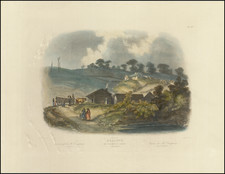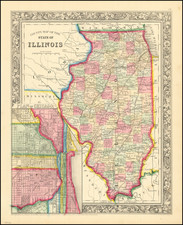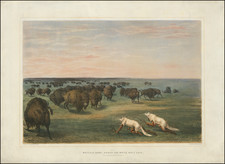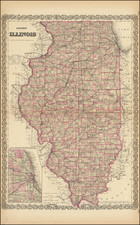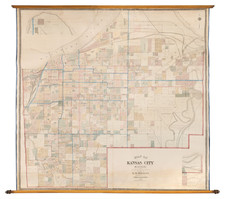This map depicts the region between the Mississippi Valley and the Appalachian Mountains shortly after the conclusion of the American Revolution.
Shown as Louisiana, this vast area was the source of considerable political intrigue over the next several decades. Nominally owned by the Spanish west of the Mississippi River and the United States east of the Mississippi River (with the exeption of east and West Florida, the region was filled with schemes and plans made by American, French, Spanish and English agents and provacateurs, who forged secret alliances amongst each other and the indigenous Native Americans, in order to foment the prospect of breakway republics or changed alliances.
Numerous spies and conspirators saw the Ohio River Valley and Mississippi River Valley as fertile grounds for new empires or profitable investment schemes, some of which led all the way back to the French and Spanish crowns and their colonial administrators in North America.
Rigobert Bonne (1727-1794) was an influential French cartographer of the late-eighteenth century. Born in the Lorraine region of France, Bonne came to Paris to study and practice cartography. He was a skilled cartographer and hydrographer and succeeded Jacques Nicolas Bellin as Royal Hydrographer at the Depot de la Marine in 1773. He published many charts for the Depot, including some of those for the Atlas Maritime of 1762. In addition to his work at the Depot, he is best known for his work on the maps of the Atlas Encyclopedique (1788) which he did with Nicholas Desmarest. He also made the maps for the Abbe Raynals’ famous Atlas de Toutes Les Parties Connues du Globe Terrestre (1780).
More than his individual works, Bonne is also important for the history of cartography because of the larger trends exemplified by his work. In Bonne’s maps, it is possible to see the decisive shift from the elaborate decorations of the seventeenth century and the less ornate, yet still prominent embellishments of the early to mid-eighteenth century. By contrast, Bonne’s work was simple, unadorned, and practical. This aesthetic shift, and the detail and precision of his geography, make Bonne an important figure in mapping history.









